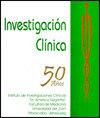不同运动强度对非酒精性脂肪肝大鼠抗氧化功能、主动脉内皮功能和血脂的影响。
IF 0.1
4区 医学
Q4 MEDICINE, RESEARCH & EXPERIMENTAL
引用次数: 0
摘要
本研究旨在比较不同强度的饮食和运动对NAFLD(非酒精性脂肪肝)大鼠抗氧化功能、主动脉内皮细胞功能和血脂的影响。将50只Sprague-Dawley(SD)大鼠(180-220g)随机分为两个实验组,并喂食标准啮齿动物日粮(CON;n=10)或高脂肪日粮(HFD;n=40)。16周后,接受HFD的动物被随机分为一个高脂肪对照组(HFC;n=10)或三个体外训练组:HFD和低强度运动(LE;n=10。这些实验大鼠在接下来的六周里保持久坐或训练。采用检测试剂盒检测一氧化氮合酶(NO)、一氧化氮(NO)和丙二醛(MDA)等氧化应激标志物。用免疫组织化学方法检测内皮一氧化氮合酶(e-NOS)和内皮素-1(ET-1)的表达水平。TC、TG和其他脂质代谢参数通过自动分析仪进行检测。不同强度的运动可改善NAFLD大鼠的脂质代谢,增强抗氧化功能,降低MDA(P<0.01),增加NO(P<0.01)并提高e-NOS和ET-1蛋白的表达(P<0.01)。所有运动组的血脂都有所下降。结果表明,中等强度运动能显著提高谷胱甘肽(GSH)含量(P<0.01),降低ET-1蛋白表达(P<0.01)。适量运动可改善主动脉内皮细胞的功能。本文章由计算机程序翻译,如有差异,请以英文原文为准。
The effect of varied exercise intensity on antioxidant function, aortic endothelial function, and serum lipids in rats with non-alcoholic fatty liver disease.
This study aimed to compare the effects of diet and exercise of different intensities on antioxidant function, aortic endothelial cell function and serum lipids in NAFLD (nonalcoholic fatty liver disease) rats. Fifty Sprague-Dawley (SD) rats (180-220g) were randomly divided into two experimental groups and fed either a standard rodent chow diet (CON; n=10) or a high-fat diet (HFD; n=40). After 16 weeks, the animals that received the HFD were randomly separated into a high-fat control group (HFC; n=10) or three ex-ercise training groups: HFD and low-intensity exercise (LE; n=10), HFD and moderate-intensity exercise (ME; n=10), and HFD and incremental intensity exercise (IE; n=10). These experimental rats keep sedentary or trained for the next six weeks. A detection kit was used to detect nitric oxide synthase (NOs), nitric oxide (NO), malondialdehyde (MDA) and other markers of aor-tic oxidative stress. The expression levels of endothelial nitric oxide synthase (e-NOS) and endothelin-1 (ET-1) were detected by immunohistochemistry. TC, TG, and other lipid metabolism parameters were detected by an auto-matic analyzer. Exercise with different intensities could improve lipid me-tabolism, enhance antioxidant function, reduce MDA (P<0.01), increase NO (P<0.01), and improve the expression of e-NOS and ET-1 (P<0.01) protein levels in NAFLD rats. Decreased blood lipids were exhibited in all exercise groups. Notably, the moderate-intensity exercise demonstrated more effecton increasing glutathione (GSH) contents (P<0.01) and decreased the ex-pression of ET-1protein levels (P<0.01). The results showed that exercise at different intensities improved lipid metabolism and enhanced anti-oxidation function. Moderate exercise could improve the function of aortic endothelial cells.
求助全文
通过发布文献求助,成功后即可免费获取论文全文。
去求助
来源期刊

Investigacion clinica
MEDICINE, RESEARCH & EXPERIMENTAL-
CiteScore
0.20
自引率
50.00%
发文量
2
审稿时长
>12 weeks
期刊介绍:
Estudios humanos, animales y de laboratorio relacionados con la investigación clínica y asuntos conexos.
 求助内容:
求助内容: 应助结果提醒方式:
应助结果提醒方式:


